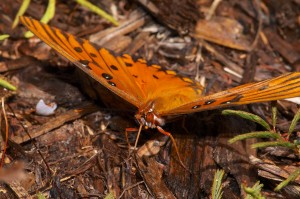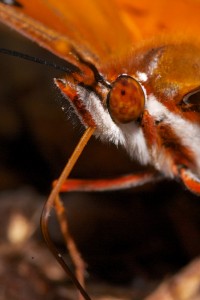We’ve had some cold and dry weather so far this young spring—daytime highs in the 60s, with humidity in the 40% range. (To all those outside Florida or south Texas, neither of those numbers sounds like cold or dry, but hey—it’s all relative, right?) We’ve also had our first full moon of spring very early this morning, which means Easter is this Sunday, in case you didn’t remember how that moveable feast works.
It also means it’s time to get out into the garden and check out what needs trimming and what needs watering. (This wisdom comes to me from my next door neighbor at my old house, who ran a plant service in her working days.) The lovely American Beautyberry (Callicarpa americana) tends to get a bit leggy, and it’s best to cut it back fairly hard before the growing season begins. Also, this cold, dry weather has some of my other normally hardy natives looking a mite piqued: the coffees are drooping and my Cordia globosa are looking parched.
So late this morning, I took my pruning shears, hose, and camera to freshen up the yard a little. The shears to trim, the hose to refresh, and the camera to see what might be drawn in (or flushed out) by the water.
And lo and behold, I found my first instance of a butterfly “puddling.” Strictly speaking, butterfly puddling is when male butterflies find a nice muddy spot and lap up minerals through those long probosces of theirs, so perhaps this isn’t really puddling, but it is a fine example of a Gulf Fritillary drinking from the moist mulch:

Apparently this bit of open water over mulch was so tempting for this chilly little lepidopteran that it let me get much closer than I’ve ever been able to get to one before:

These bright spangled gems use our native maypop/passionvines (Passiflora species) as larval foodplants, so they love my back yard, and are often found there. I’ve written about this species before, but I neglected to point out that the “fritillary” in its common name is actually something of a misnomer. According to the best butterfly book I’ve ever seen, this butterfly is a heliconian, not a fritillary:
This species and the next [Euptoieta claudia, Variegated Fritillary] are evolutionary “lynchpins” that straddle a blurry taxonomic line between the heliconians and fritillaries. The Gulf Fritillary was named (or misnamed, actually) on the basis of its appearance more than its ancestry, since it falls on the heliconian side of the divide, whereas the Variegated Fritillary is more properly labeled as a “fritillary.” The Gulf Fritillary is the sole member of its genus. […]
The species’ common name reportedly refers to individuals seen flying over the Gulf of Mexico during seasonal irruptions.
Yay, nature! If you haven’t gotten out there yet to enjoy it, there’s still time to heed Candide’s injunction to Pangloss: il faut cultiver notre jardin! If you want to see anything, that is.

Ben,
How did I not know until this minute that you had such a wonderful blog.
So excited I found it.
Marta
Glad you found it, Marta. Thanks for stopping by! And very glad you like it!